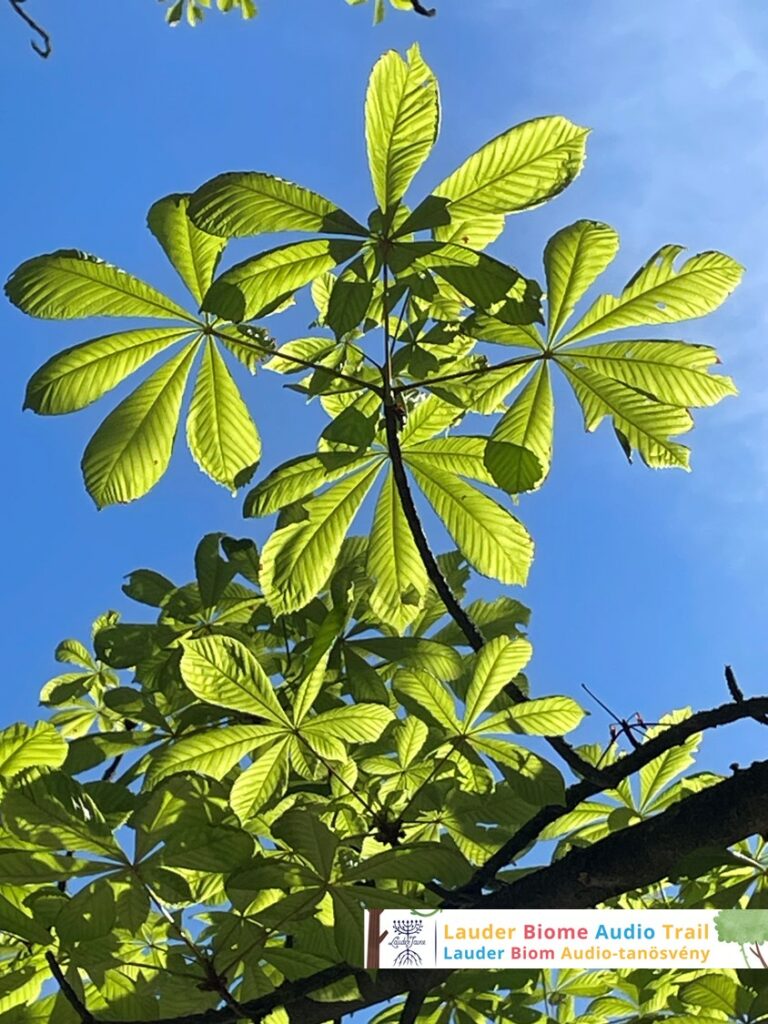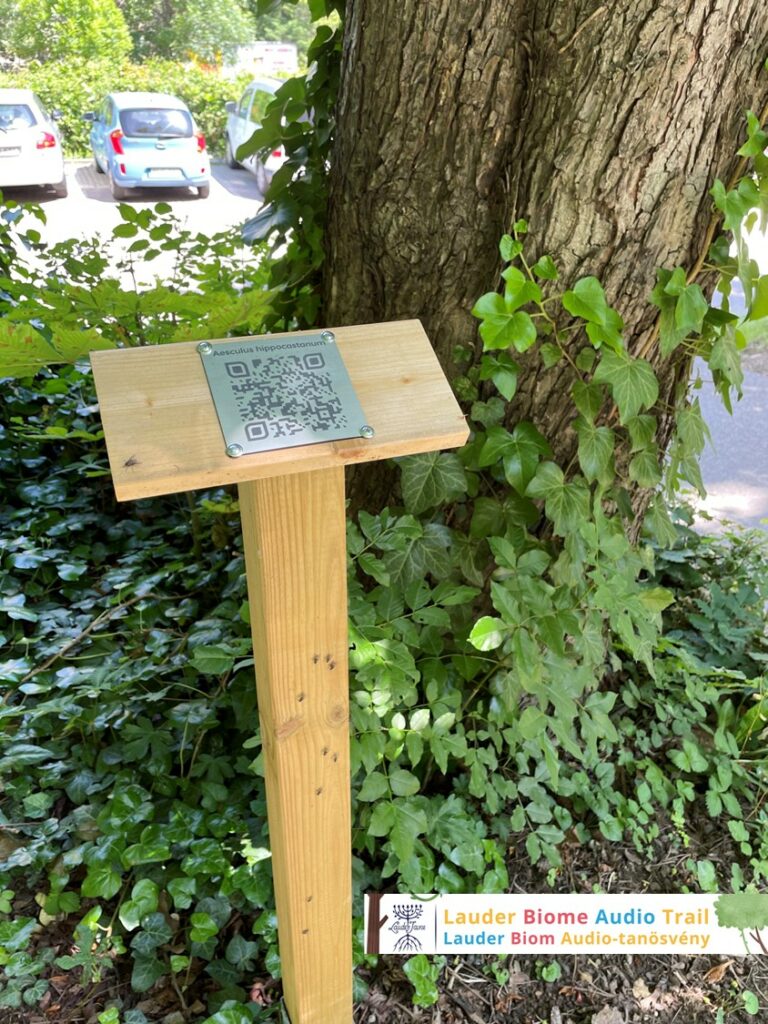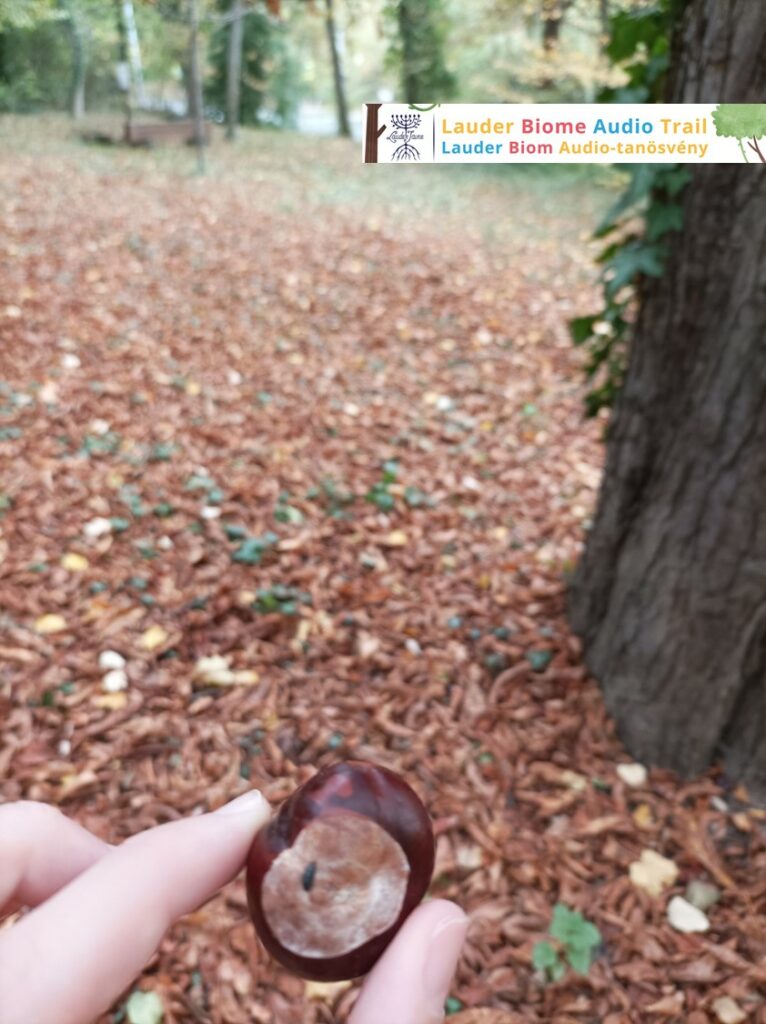
- Horse Chestnut / Aesculus hippocastanum
This is a Horse Chestnut tree, or Aesculus hippocastanum. The bark of the tree is smooth grayish brown. In older age, cracks and furrows develop on it.
Its digitate,finger-like lobed leaves have a leathery feel and are dark green. Its long-stemmed leaves consist of ovate leaflets with serrated edges. The veins of the leaves run to the edge. The leaves are connected to the branches by long stems.
It’s very tall, it can grow up to 30-35 meters high, and has dense foliage. In spring its flowering is spectacular. It’s a deciduous tree.
It produces pod crops, green and spiky on the outside, however the seeds are bright and reddish brown, which look nice, but they are not edible.
On the branches we can often see squirrels jumping and birds sitting along with various bug species.
Back to the menu of the learning path

- Vadgesztenye / Aesculus hippocastanum
Ez egy vadgesztenye fa, vagyis egy Aesculus hippocastanum. A fa törzse sima, szürkésbarna. Idősebb korban repedések és barázdák alakulnak ki rajta.
Az átellenesen álló, ujjasan összetett levelei bőrszerűek és sötét zöldek, száruk hosszú; tojásdad alakú, fűrészelt élű levélkékből állnak. A levelek erezete élre futó. Hosszú szárral kapcsolódnak az ágakhoz.
Nagyon magas, akár 30-35 méter magasra is megnőhet. Sűrű lombozata van, tavasszal mutatós virágzású, azonban lombhullató fa.
Zárvatermő, termése kívül zöld és tüskés, a mag fényes és vöröses barna, de nem ehető.
Az ágakon gyakran láthatunk mókusokat és madarakat, valamint különféle bogaraknak is otthont ad.

